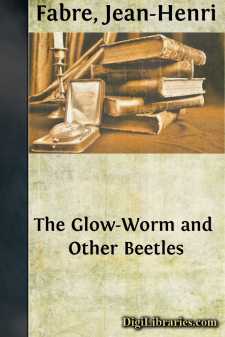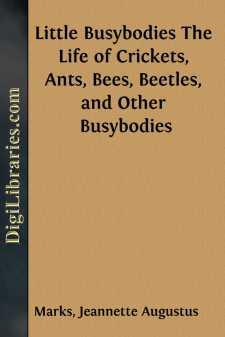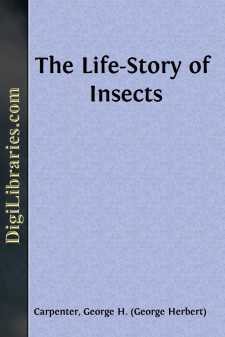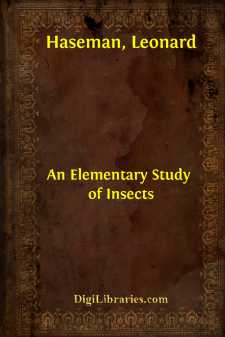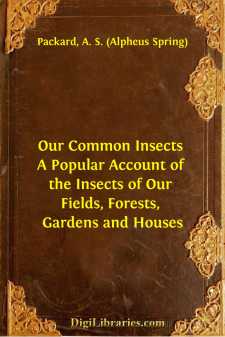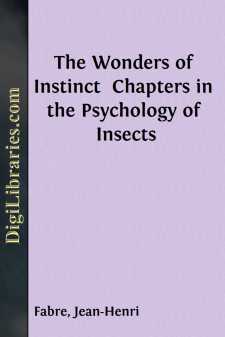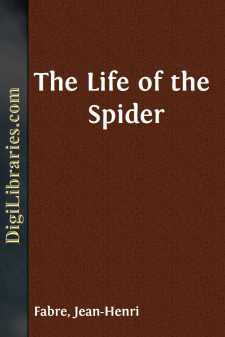Nature
- Animals 47
- Birds & Birdwatching 41
- Dinosaurs & Prehistoric Creatures 1
- Flowers 5
- General 32
- Horses 6
- Insects & Spiders
- Mammals 7
- Mushrooms 2
- Natural Disasters 6
- Natural Resources 3
- Reptiles & Amphibians 2
- Trees & Forests 10
Insects & Spiders Books
Sort by:
by:
Jean-Henri Fabre
CHAPTER ITHE GLOW-WORM Few insects in our climes vie in popular fame with the Glow-worm, that curious little animal which, to celebrate the little joys of life, kindles a beacon at its tail-end. Who does not know it, at least by name? Who has not seen it roam amid the grass, like a spark fallen from the moon at its full? The Greeks of old called it [Greek: lampouris], meaning, the bright-tailed....
more...
FOREWORD. When, some time since, in consequence of continuing demands, the Brooklyn Entomological Society resolved to publish a new edition of its Explanation of Terms used in Entomology, and entrusted the writer and two associates with the task of preparing the same, it was believed that a little revision of definitions, the dropping of a few obsolete terms and the addition of a few lately proposed,...
more...
A WORD TO THE CHILDREN AND THE WISE We hope that the children who read this book will like the boys and girls who are in it. They are real, and the good times they have are real, as any boy or girl who has lived out-of-doors will know. And the stories are true. Peter is not always good. But do you expect a child always to be good? We do not. Sometimes, too, the frolics turn into a scramble to catch a...
more...
Among the manifold operations of living creatures few have more strongly impressed the casual observer or more deeply interested the thoughtful student than the transformations of insects. The schoolboy watches the tiny green caterpillars hatched from eggs laid on a cabbage leaf by the common white butterfly, or maybe rears successfully a batch of silkworms through the changes and chances of their...
more...
by:
Leonard Haseman
INTRODUCTION In the preparation of a book of this nature, to be used in the grade schools, we realize that the one fundamental thing to keep in mind is the economic importance of the insect, be it good or bad. The child wants to know what is good and what is bad and how he can make use of the good and how he can get rid of the bad. And yet there is something more associated with the life, work and...
more...
PREFACE. This little volume mainly consists of a reprint of a series of essays which appeared in the "American Naturalist" (Vols. i-v, 1867-71). It is hoped that their perusal may lead to a better acquaintance with the habits and forms of our more common insects. The introduction was written expressly for this book, as well as Chapter XIII, "Hints on the Ancestry of Insects." The...
more...
CHAPTER I PARASITISM AND DISEASE PARASITES he dictionary says that a parasite is a living organism, either animal or plant, that lives in or on some other organism from which it derives its nourishment for a whole or part of its existence. This definition will serve as well as any, as it seems to include all the forms that might be classed as parasites. As a general thing, however, we are accustomed to...
more...
by:
Jean-Henri Fabre
CHAPTER 1. THE HARMAS. This is what I wished for, hoc erat in votis: a bit of land, oh, not so very large, but fenced in, to avoid the drawbacks of a public way; an abandoned, barren, sun-scorched bit of land, favoured by thistles and by Wasps and Bees. Here, without fear of being troubled by the passers-by, I could consult the Ammophila and the Sphex (two species of Digger-or...
more...
by:
Jean-Henri Fabre
CHAPTER I: THE BLACK-BELLIED TARANTULA The Spider has a bad name: to most of us, she represents an odious, noxious animal, which every one hastens to crush under foot. Against this summary verdict the observer sets the beast’s industry, its talent as a weaver, its wiliness in the chase, its tragic nuptials and other characteristics of great interest. Yes, the Spider is well worth studying, apart...
more...


